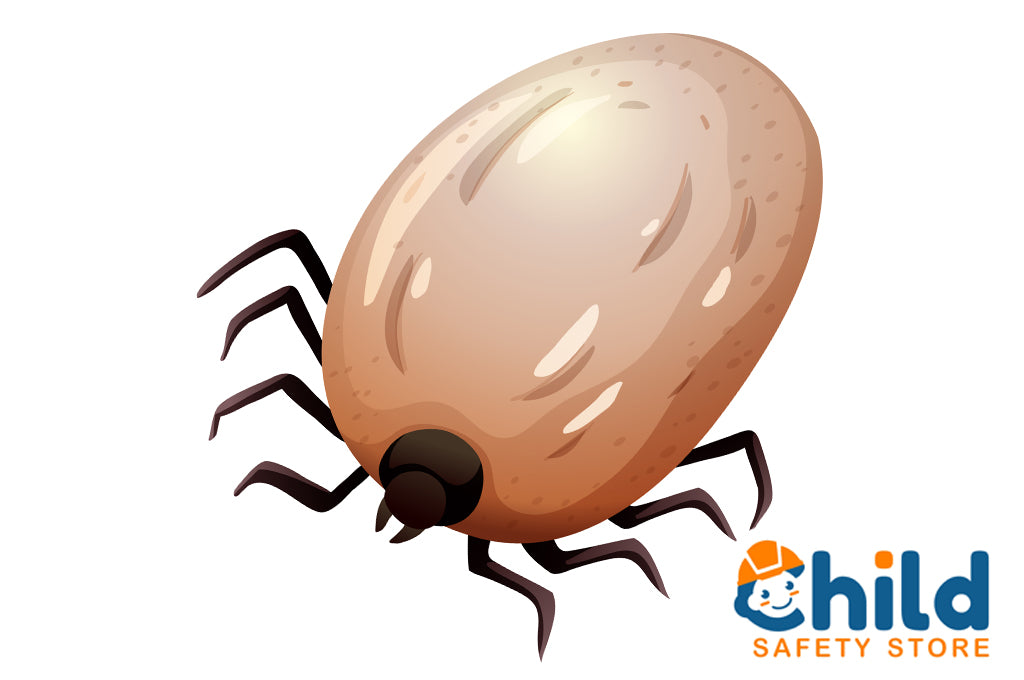
Protecting Your Child From Ticks
Warmer weather means spending lots of time outdoors with your kids as they joyfully run around in the backyard or playground. Unfortunately, just as you and your kids are around more often, so are ticks! That’s right, it’s tick season.
The biggest concern here is that bacteria found in some deer ticks can cause Lyme disease, an infection caused by tick bites. To be precise, the peak months for catching Lyme disease are May through August. With this in mind, let’s take some time to learn a little more about those pesky ticks and how to protect your kids from them.
Why Preventing Tick Bites is Serious Business
Unfortunately, Lyme disease is all too common. In fact, a record number of tickborne diseases were reported in 2017. Children are at the highest risk for getting this disease. Here’s a shocking statistic: 75,000 youth are diagnosed with Lyme every year. Specifically, the illness affects kids aged 5 through 9 most significantly.
A telltale sign of Lyme is a rash that looks like a bull’s-eye. Someone with Lyme can expect to experience symptoms within three to thirty days. This may include chills, fatigue, fever, joint pain, and more. When untreated, symptoms can worsen, ultimately resulting in anything from severe headaches to heart problems.
Protect Your Child from Ticks
To avoid your child getting bitten by a tick, you need to reduce their exposure to them. In this case, bug spray is not necessarily the answer. Therefore, one goal should be to make your child’s play area inhospitable to these pesky creatures. You see, ticks avoid the sun, but they thrive in cool, moist areas such as shady bushes. By keeping your lawn well maintained, your child will be less likely to get bitten. You can accomplish this by raking up fallen leaves, mowing the grass, minding where your pets wander off to, and keeping play-sets on mulch or pavement instead of the grass.
Now that you’ve prepared the outdoors to reduce the number of ticks, it’s time to prepare yourself and your kids! Just as you fend off sunburns by wearing lightweight clothes that cover your skin, a similar approach can help you to avoid tick bites. When playing in a potentially tick-infested area, your kids should wear long pants and long sleeves. Tucking their pants into their socks or shoes will prevent ticks from getting to their legs. Additionally, wearing bright and light colors will make ticks more visible if they end up on your clothing.
Check for Ticks
Lyme disease is most likely to develop when the tick remains attached to a person for a long period of time. Therefore, it’s important to check thoroughly for any sign of a tick. As soon as possible after your child comes indoors, check their clothing and give them a bath. For older children who bathe on their own, be sure to train them how to search for ticks. Showering within the first few hours of being outdoors can reduce the risk of Lyme disease. Bathing your child gives you the chance to scan their entire body for the bothersome bugs. Areas that are particularly vulnerable to ticks include warm moist places like the armpit and behind the knees. Don’t forget to examine your pets after they come inside as well!
Get Rid of Ticks
Now you know how to prevent your kids from tick bites. Getting bitten doesn’t mean for sure that you’ll have Lyme disease, but not dealing with it promptly will increase your chances. If you happen to come across a tick, you should remove it gently but immediately with a pair of tweezers.
